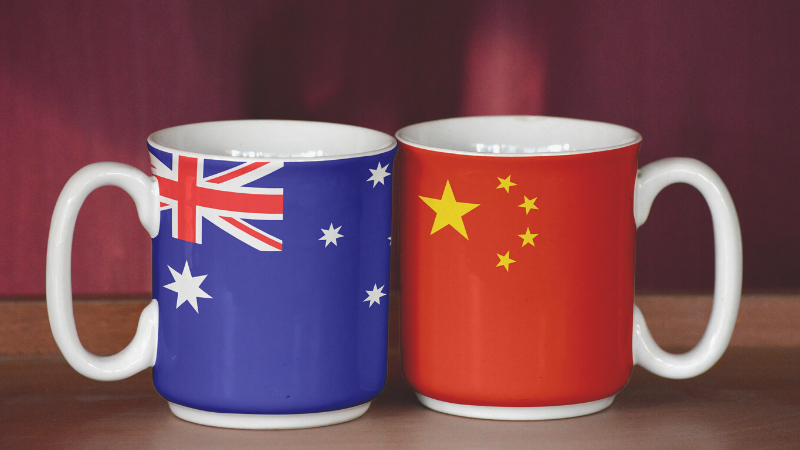Perspectives | A way forward for Australian strategic policy
August 17 2022

Perspectives is UTS:ACRI's commentary series, featuring a piece on a topical subject in the Australia-China relationship from an invited expert contributor.
By Michael Clarke and Matthew Sussex
Defence Minister Richard Marles’ recent announcement of a major Defence Strategic Review represents a landmark opportunity for Australia to recalibrate the thinking, missions and capabilities it wants the ADF to perform over the next decade.
The Strategic Review will be extensive. It seeks to identify priority areas for investment, force preparedness and disposition, and will develop an overarching strategy to ensure the ADF is fit for purpose in an environment where strategic confidence and stability continue to trend downward.
It is also long overdue. Australia is increasingly challenged in ways unsuited to a small conventional military force reliant on a stable order underwritten by the United States. Major power competition, hybrid warfare, cyber security dangers, and ongoing attempts by unfriendly nations to splinter regional friendships will require careful but also new thinking by the Australian government.
Put simply, we will need to ask three questions. First, how can we best anticipate the types of threats we will face? Second, what does a realistic Australian posture to deter those threats look like? And third, what types of capabilities – both independently and in concert with allies and partners – will be needed to make Australia’s deterrent credible?
Such an undertaking entails risks. One of those is that we put capability before concept, leaving us to design our strategy around our purchasing decisions. Putting the cart before the horse in that way limits the flexibility of our armed forces, and turns what should be choices into constraints.
Another risk is that we fall into the trap of assuming strategic constancy: in other words, believing that what has worked before will work in the future. Making strategy is always a series of bets, but we also need to plan for strategic shocks. At present much of our defence planning rests on the assumption that the United States will remain prepared to militarily contest the People’s Republic of China (PRC) for regional supremacy, including close to the Chinese mainland.
Many of our choices have been predicated on the belief that any other US choice is preposterous. Indeed, the nuclear submarine component of the AUKUS agreement is built around Australia being integrated into US warfighting efforts. Recalling the ‘Forward Defence’ approach of the 1970s and 1980s, it envisages a deterrence-by-punishment approach: that Australia and its allies will be capable of inflicting such harm on the PRC that Beijing regards major war as a losing bet.
But what do we do if the US is at some stage in future no longer prepared to fight to protect Taiwan? Or the South China Sea? Or the South Pacific? In America’s turbulent domestic politics the isolationist strand of its foreign policy thinking has not gone away.
Having failed to have a Plan B for the transactional approach of Donald Trump’s presidency, we will need to carefully align our defence planning and capabilities to be as flexible as possible. That’s in order to be the most effective ally we can to the US, as well as building sovereign capabilities of our own in case America’s own security policy changes in ways that negatively affect us.
We make this case in a study published this week by the Australia-China Relations Institute at the University of Technology Sydney. Focusing on the PRC, Australia’s national security choices and great power competition in the Indo-Pacific, we argue that an effective Australian defence posture combines the most useful aspects of the alternative to Forward Defence – the Defence of Australia tradition – with an additional emphasis on regional engagement and integration. And although the PRC is just one of the puzzles the Strategic Review will need to respond to, it is the issue that will define Australian defence policy for the foreseeable future.
What we have in mind is an agile Australian defence force that has the capacity to deter by denial, not punishment. In other words, the ADF should be sufficiently equipped to make Australia a tough nut for the PRC to crack, so much so that it is not worth the effort. At the same time, a network of security partnerships with like-minded actors in the region – what has been called ‘nodal’ defence – spreads the overall task of managing regional security and ensures Australia remains regionally integrated, not potentially isolated.
Naturally this will have significant implications for Australia’s defence posture. But we argue it makes best use of our resources, decreases the risks of our strategic bets, and makes us a more useful ally to the US. Frankly it makes no difference whether an Australian or an American submarine fires a Tomahawk missile at the PRC in defence of Taiwan. But having the capacity to protect the sea lanes on which Australia’s trade depends, or secure the South Pacific, will go a long way towards giving us control of our strategic destiny – as well as better sharing the security burden with our American ally.
This piece is based on a report for the Australia-China Relations Institute, University of Technology Sydney, China, Australia’s national security choices and great power competition in the Indo-Pacific, published August 17 2022.
Dr Michael Clarke is an Adjunct Professor at the Australia-China Relations Institute, University of Technology Sydney and Senior Fellow at the Centre for Defence Research, Australian Defence College.
Dr Matthew Sussex is Senior Fellow at the Centre for Defence Research, Australian Defence College; Associate Professor (Adjunct) at the Griffith Asia Institute, Griffith University; and a Visiting Fellow at the Strategic and Defence Studies Centre, ANU.


